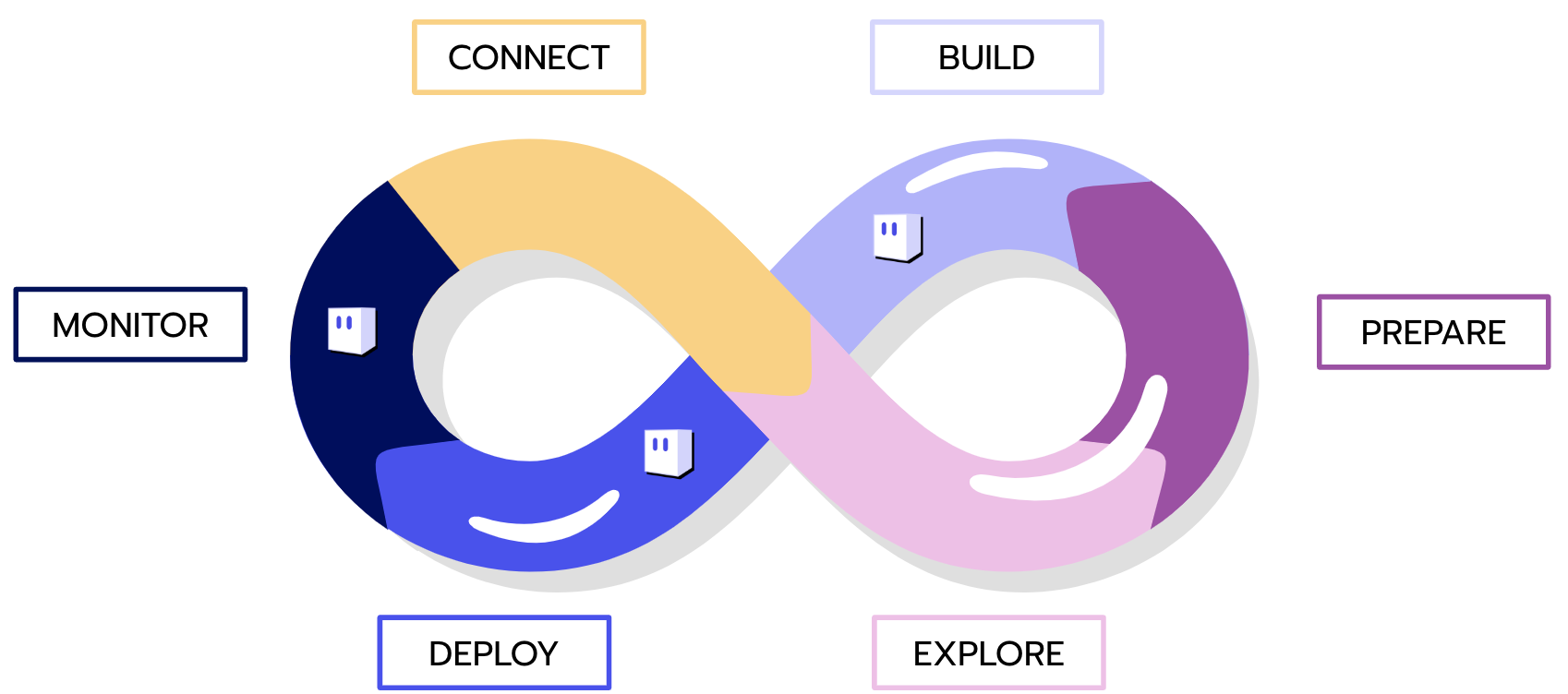Environments
An environment is the infrastructure used by the platform to store data and run computation.

By default, our environments are created on AWS, but it is possible, if needed, to configure our platform on another Kubernetes-compatible cloud (e.g. OVH, GCP, Azure, etc.).
Users can create as many environments as they want in each project. Each environment is hermetically sealed from the others.
It is composed of:
- a cluster: cloud computing resources based on a fully managed Kubernetes service. The ML pipelines created in an environment are executed on the associated cluster.
- a data store: cloud storage to save and retrieve any amount of data at any time. The results of the pipelines and metrics generated by the platform are also stored on the data store.
It is possible to tag environments with 3 types: development, test and production.
The main objectives of the environments are:
- Building and managing infrastructures in a few clicks without DevOps skills.
- Ensuring an efficient and automated use of computing resources, thanks to Kubernetes.
- Enabling large scale deployment of Python jobs without rewriting to a more production friendly language.
- Fine-tuning the size of your environments according to the needs of your projects.
- Easily building dedicated environments for each phase of the project to adopt software development best practices.
